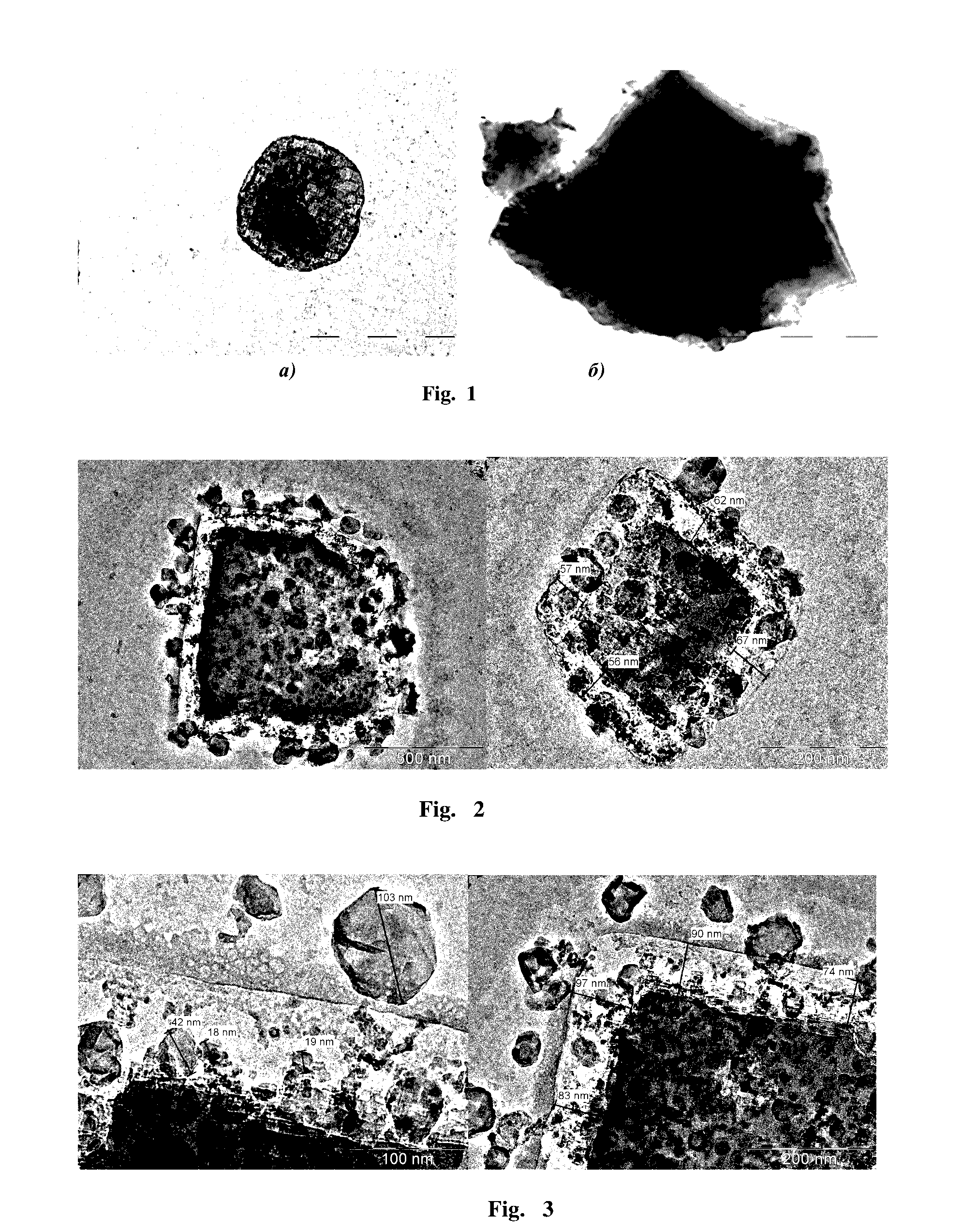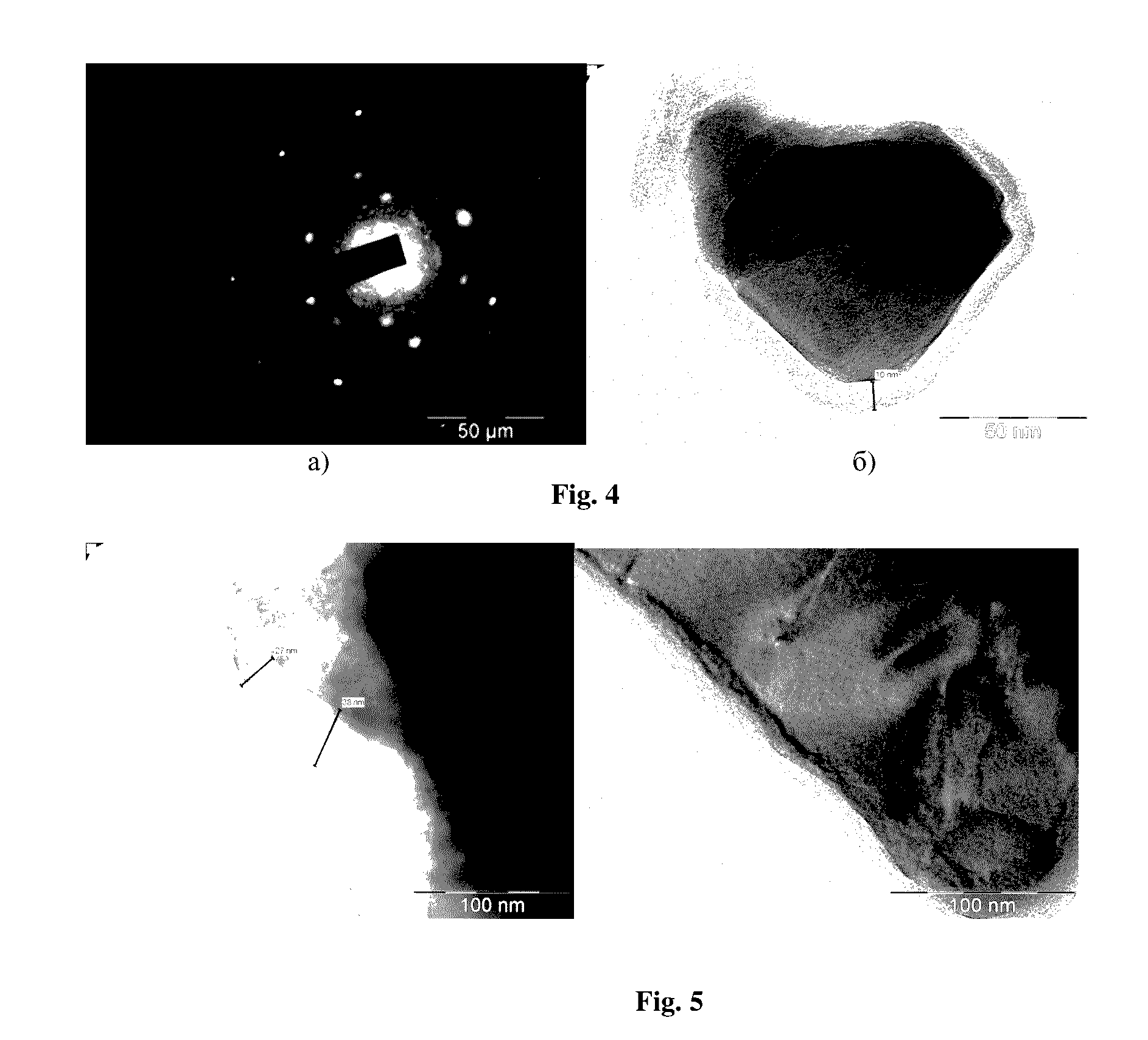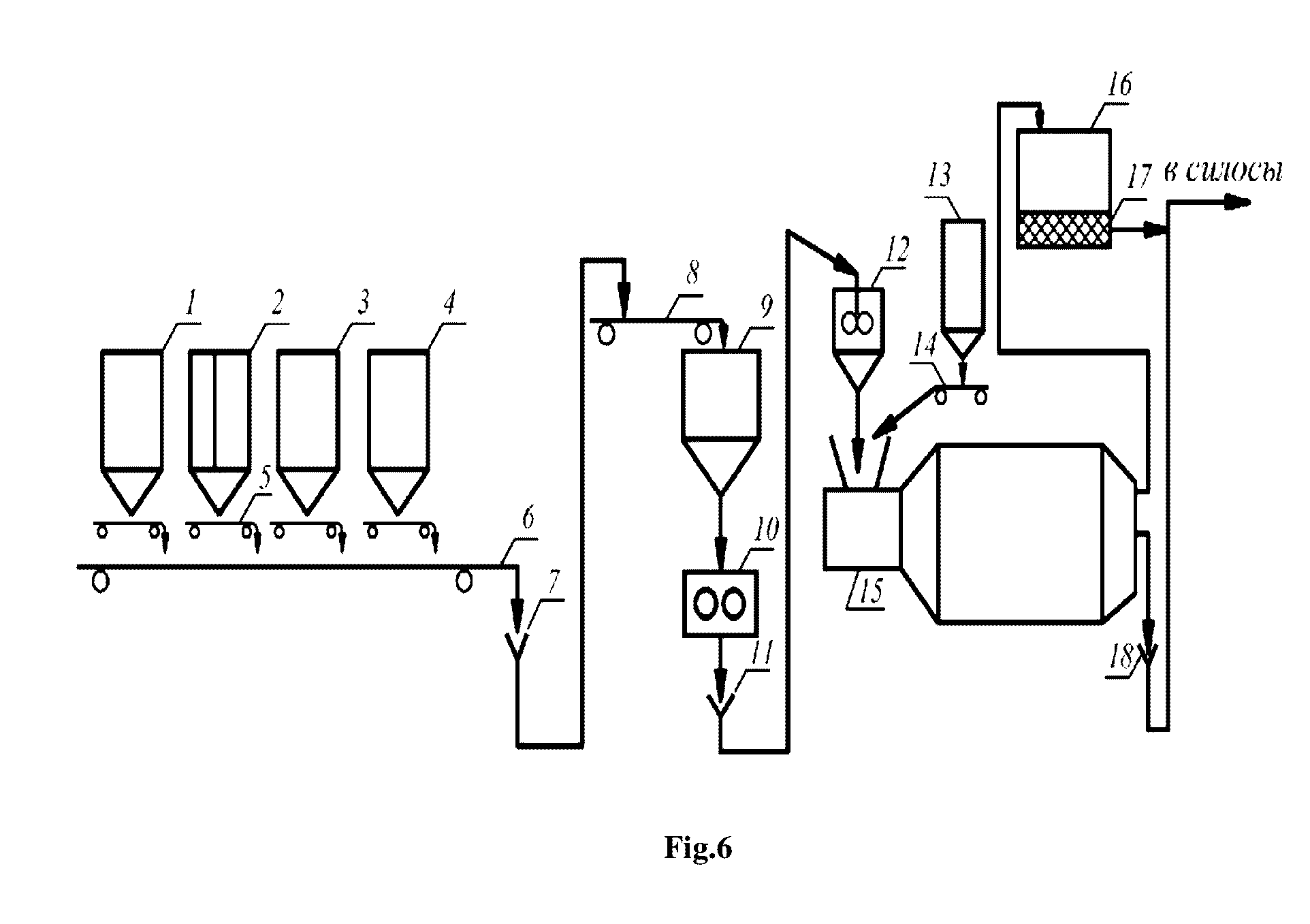Method for producing nano-cement, and nano-cement
a nano-cement and nano-cement technology, applied in the field of cement technology, can solve the problems of poor progress in improving strength, the construction and technical properties of portland cement have stopped, and the cost of production in russia is very high, so as to improve the construction and technical properties of cement, reduce the cost, and reduce the cost
- Summary
- Abstract
- Description
- Claims
- Application Information
AI Technical Summary
Benefits of technology
Problems solved by technology
Method used
Image
Examples
examples 1-6
Example 1
[0052]Portland cement, silica sand, polymeric modifier and gypsum were charged to a ball mill in proportions given in Table 1 to produce “nanocement 90”. The material mixture was kept in a mill for 30-40 min. Discharging was followed by estimation of specific surface area and thickness of nanoshells. Construction and technical properties of “nanocement 90” are given in Table 2 along with data on fuel cost and CO2 emissions.
examples 2-6
Production of Other Nanocements
[0053]Nanocement 75, nanocement 55, nanocement 45, nanocement 35, and nanocement 30 were produced by example 1 by changing in each case the ratio of components in the mixture pursuant to Table 1. To estimate physicomechanical properties, nanocements were tested in the following way:
[0054]1. Normal consistency, setting time, specific surface, and soundness were determined pursuant to GOST 30744-2001 Cements. Testing using multifractional sand (harmonized with EM 196) without any changes.
[0055]2. Strength characteristics (in particular, cement compression strength class) were determined pursuant to GOST 30744-2001 Cements.
[0056]Testing using multifractional sand (harmonized with EN 196) with the following change: amount of mixing water was selected by cone flow on a shaking table (Hagerman's table) by DIN EN 015-3. In this case, a cone flow value should be 140-160 mm. If the upper value of cone flow exceeds the specified one, the water weight fraction in...
PUM
| Property | Measurement | Unit |
|---|---|---|
| specific surface area | aaaaa | aaaaa |
| particle size | aaaaa | aaaaa |
| particle size | aaaaa | aaaaa |
Abstract
Description
Claims
Application Information
 Login to View More
Login to View More - R&D
- Intellectual Property
- Life Sciences
- Materials
- Tech Scout
- Unparalleled Data Quality
- Higher Quality Content
- 60% Fewer Hallucinations
Browse by: Latest US Patents, China's latest patents, Technical Efficacy Thesaurus, Application Domain, Technology Topic, Popular Technical Reports.
© 2025 PatSnap. All rights reserved.Legal|Privacy policy|Modern Slavery Act Transparency Statement|Sitemap|About US| Contact US: help@patsnap.com



